A brand/project position document is a comprehensive document that outlines the key characteristics, benefits, and unique selling points of a brand/project in the marketplace.
The purpose of this document is to provide a clear and consistent understanding of what the brand/project stands for and how it differentiates itself from its competitors.
Brand Essence: A concise statement that captures the brand's core identity, values, and personality.
Example: Adventure illuminated. Our brand essence is about providing reliable, high-quality lighting solutions for outdoor enthusiasts. We are passionate about helping our customers explore the great outdoors, regardless of their journey. Our camping lamps are designed to be durable, lightweight, and easy to use, and they deliver bright, long-lasting illumination in even the toughest conditions. We believe that everyone should have access to high-quality outdoor gear, and we’re committed to making our products affordable and accessible to all. At the heart of our brand is a dedication to adventure and a love of the great outdoors. This is the essence of who we are and shines through in everything we do.
Elevator pitch: A brief, persuasive speech that describes what a company does, what problem it solves, and why it's unique.
Example: Our camping lamps are designed to deliver reliable, long-lasting illumination in even the toughest conditions. With a durable, lightweight design and easy-to-use functionality, our lamps are the perfect companion for camping, hiking, and outdoor pursuits. Whether exploring the wilderness or relaxing under the stars, our lamps will help you stay safe and comfortable. So if you’re looking for a high-quality, affordable lighting solution for your next adventure, look no further. Our camping lamps are a perfect choice.
Target Persona/Audiences: A detailed description of the brand's ideal customers, including their demographics, psychographics, and behaviors.
Example: Our primary target audience includes campers, hikers, and backpackers looking for reliable and portable lighting solutions for their trips. They are typically between the ages of 18 and 45 and enjoy spending time in nature and trying new outdoor activities.
Example: Camping (outdoors activities) + Kickstarter
Competitive Analysis: An evaluation of the brand's key competitors and their positioning in the market.
Example: NexaPulse.
Market Position: Leader in smart home appliances.
Strengths: Strong distribution network, advanced AI integration in products.
Weaknesses: Higher price range, limited variety in color options.
Unique Selling Proposition (USP): A clear and compelling statement communicating the brand's key point of differentiation.
Example: Our camping lamp’s unique selling proposition is its powerful brightness and lightweight design. With 300 lumens of brightness and weighing only 50 grams, our lamp provides illumination unmatched by other lamps in its weight class.
Example: Our camping lamp’s unique selling proposition is its eco-friendliness and sustainability. Unlike other camping lamps on the market, our product includes a battery made of recycled batteries, which reduces waste and helps to protect the environment.
Brand Promise: A statement that outlines what the brand promises to deliver to its customers.
Example: Our company is committed to providing high-quality camping lamps that are both lightweight and sustainable. Our brand promise is to deliver durable, reliable, and eco-friendly products without compromising on performance or portability. We believe that outdoor enthusiasts deserve the best of both worlds: products designed to withstand the toughest outdoor conditions while being easy to carry and environmentally conscious. We strive to achieve this by using sustainable materials in our products, such as recycled batteries and energy-efficient LED lights.
Use Cases: A list of the projects' use cases to its customers.
Example: Camping Trip
Example: Power outage
Example: Jogging at night
Brand Tone of Voice: A description of the brand's communication style, language, tone, and messaging.
Example: At Green Light, we’re passionate about sustainable gear and believe that every choice we make as a brand can positively impact the planet. Our tone of voice is friendly, approachable, and informative. We speak with a casual, conversational style that connects with our audience personally. Our voice is optimistic, inspiring, and empowering, encouraging our customers to make conscious choices and join us in our mission to protect the environment.
Overall, the brand position document guides all brand communications and helps ensure that all messaging is consistent and aligned with the brand’s core identity and positioning. Sometimes, it helps to ask ChatGPT for help to get started. We’ve included a prompt below to get you started. However, it’s important to rewrite ChatGPT’s result into something that’s more personal and truly resonates with your core values.
💬 ChatGPT prompt ✨
You’re a branding expert helping me build my branding style and material.
The project we’re working on is called <product name> and it <explain what the product does>
We want our brand tone to be <serious/playful/reliable/gen-z/sustainable/other>
Our brand essence is: “<insert brand essence>”
Our target customer is: <describe target customer>
Now, give me a competitive analysis of this brand’s key competitors and their positioning in the market, broken down in a table.
Next, write a USP statement for the brand
Also, write a compelling elevator pitch for the brand
Lastly, give me brand tone of voice guide, including style, language, tone and messaging
